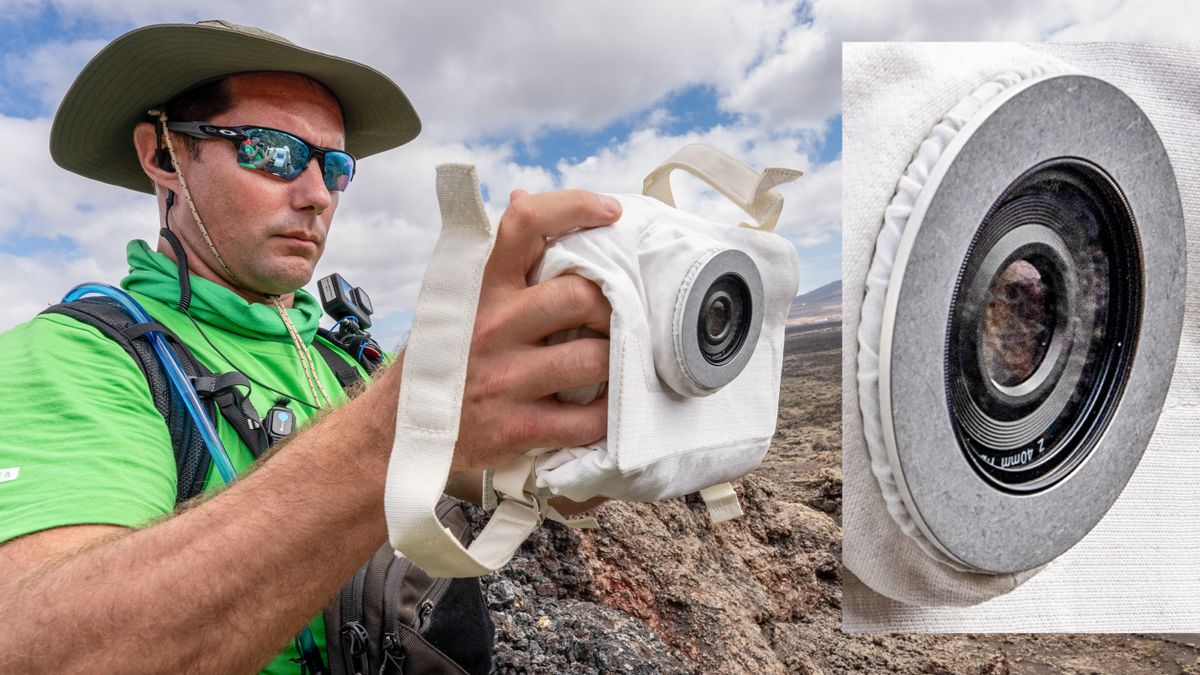Will the Nikon Z9 be the next mirrorless camera on the moon? Judging from pictures released by the European Space Agency this week, we think it may well be.
The images show the Handheld Univeral Lunar Camera (HULC) being put through its paces, ahead of it being used on the Artemis III mission which is due to land on the south pole of the Moon in 2025.
Looking at close-ups of the images you can see clearly that the camera is a Nikon Z mirrorless camera. You can identify a Nikon Z 40mm lens being used on location in Lanzarote. And back in the briefing room, a further forensic close-up shows that the rear screen has the same infographic design of camera like the Nikon Z9 and Nikon Z8.
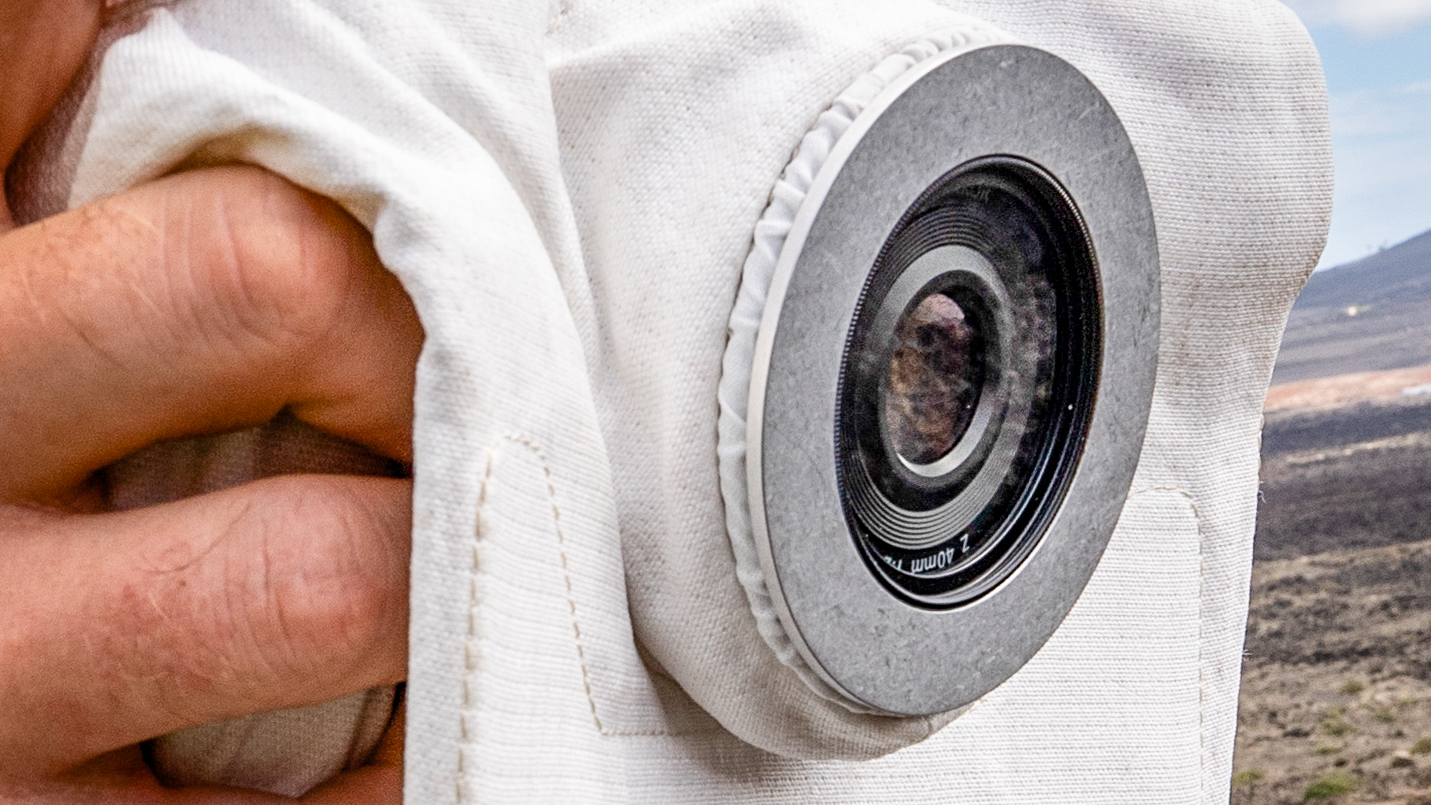
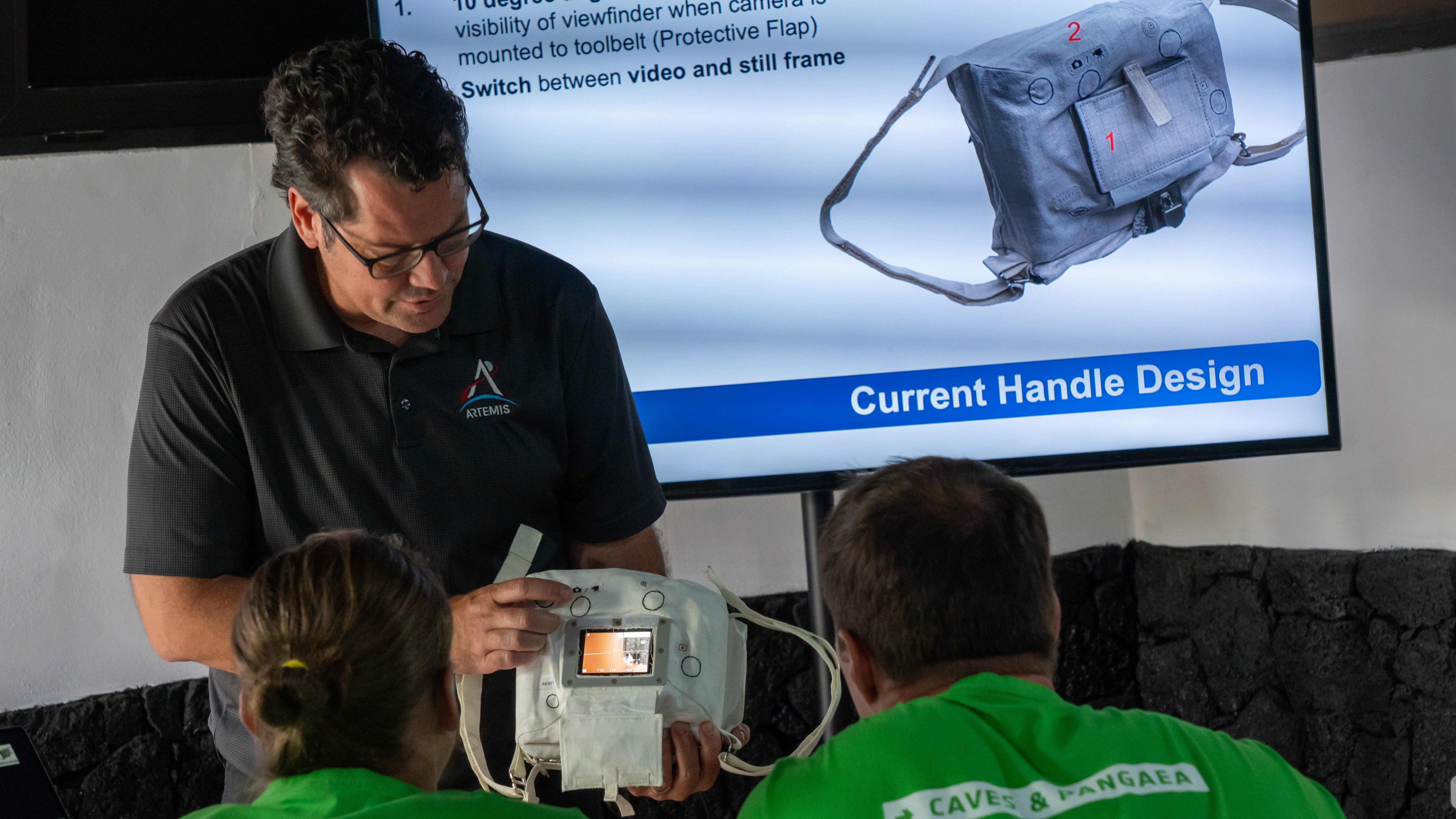
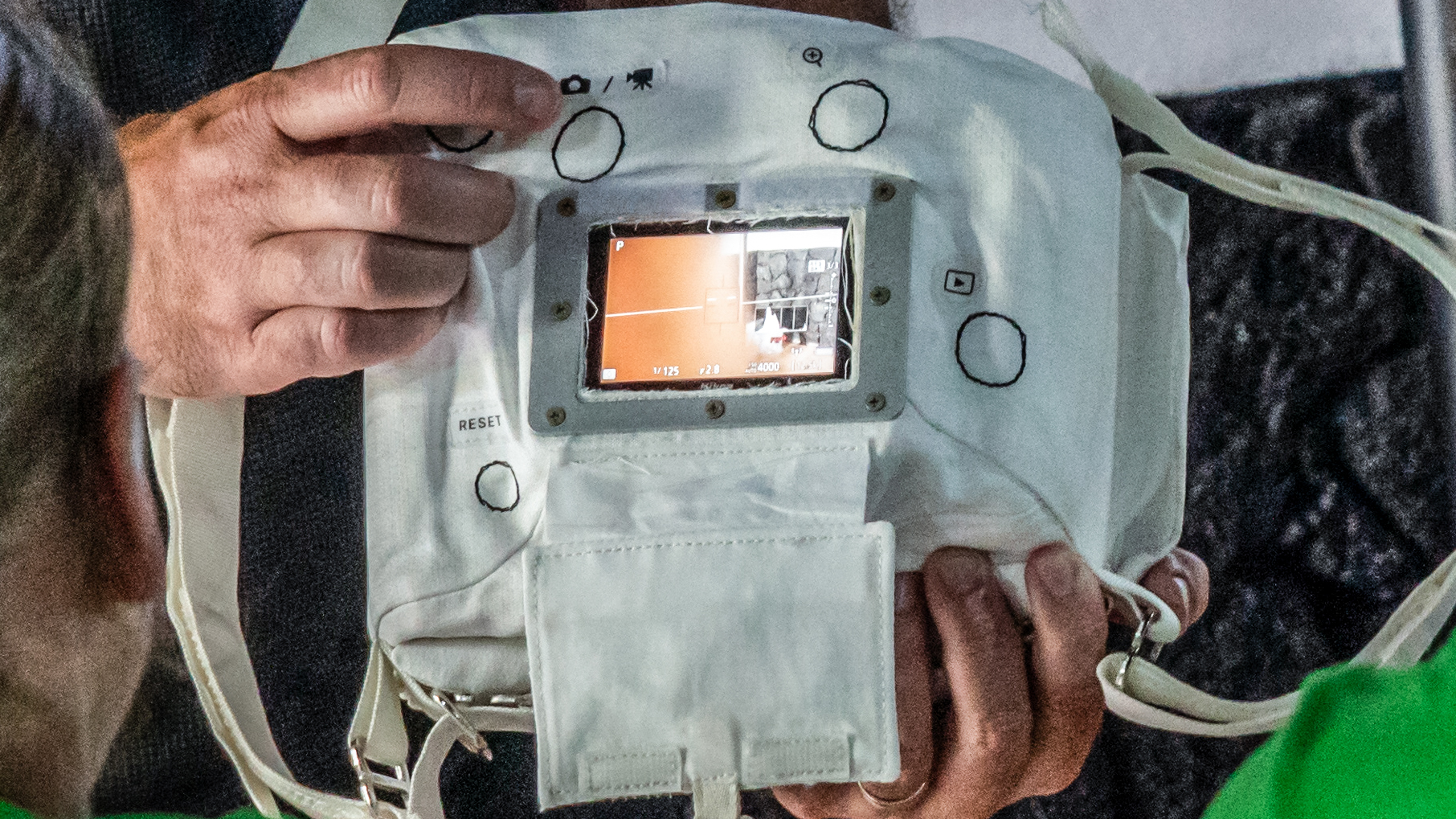
NASA and the ESA, who are working together to develop the Moon Camera, have not yet formally announced which camera company they are working with. But they have said that it will be the “first mirrorless camera for handheld use in space”. We have also been told that the camera has been built using “professional off-the shelf cameras”.
From the shape of the camera, it is almost certain that the camera that has been modified for the next lunar landing will be the Nikon Z9. The size alone is a giveaway – despite the thermal housing that the camera being used in the trials is covered by.
But the housing also gives us clues as to just how much of the Z9 has had to have been changed to allow for use by gloved astronauts in space suits. The rear LCD looks like has been moved to a more central position – and is no longer tiltable, but instead set at a 10° angle (according to a slide we can see from the technical briefing, above).
Key buttons on the back of the camera have also been moved, we can see from markings on the housing, to help with the ergonomics.
Nikons in space
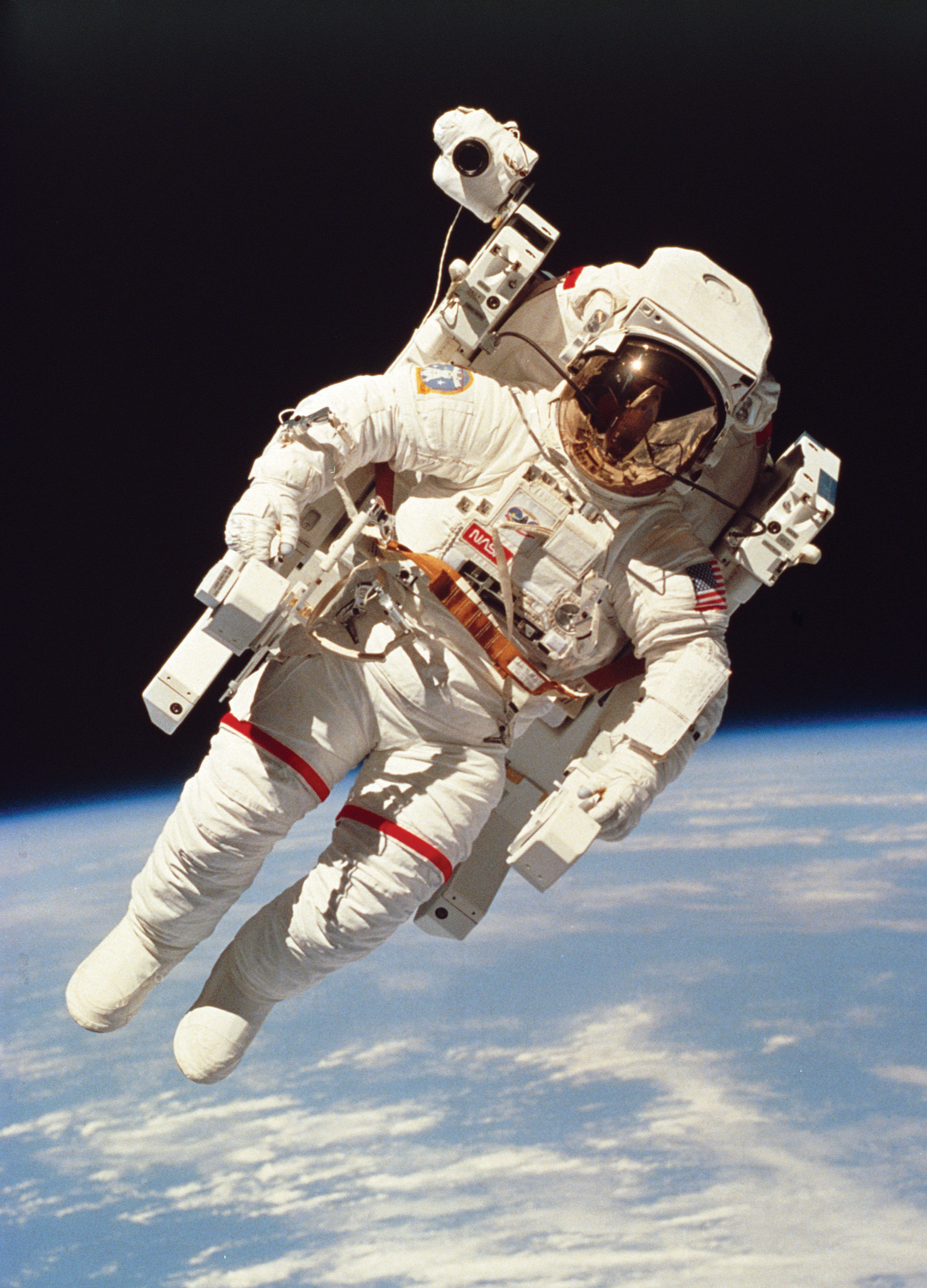
It should come as no surprise that Nikon is the brand of choice for NASA. The two have been working together since 1971, when the Nikon Photomic FTN was used on the Apollo 15 mission.
In the late ’70s, Nikon worked on two NASA-modified versions of the F3 for use in the Space Shuttle program. The so-called ‘Small Camera’ was equipped with a motordrive and was capable of holding up to 72 frames per film. There was also a ‘Big Camera’ that had a large 250-exposure film back that could be loaded with thinner long film. It had a dark slide that allowed astronauts to remove the film back in the middle of a roll and switch to a back loaded with different film.
Nikon’s relationship with NASA has continued into the digital age, with NASA requesting D2Xs DSLRs in 2008, followed by D3s bodies in 2009 for use in recording activities aboard the Space Shuttle and International Space Station.
These days, you are likely to see a Nikon D5 in the hands of ISS astronauts… but it looks likely that they will move from Nikon DSLRs to Nikon mirrorless for the next chapter of lunar exploration.
New ‘moon camera’ developed for NASA’s upcoming Artemis III lunar landing

Dr. Thomas Hughes is a UK-based scientist and science communicator who makes complex topics accessible to readers. His articles explore breakthroughs in various scientific disciplines, from space exploration to cutting-edge research.

